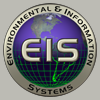
|
Payman Arabshahi Principal Engineer Associate Professor, Electrical Engineering payman@apl.washington.edu Phone 206-221-6990 |
Research Interests
Sensor Networks, Adaptive Signal Processing, Digital Communications, Wireless Networking, Biological Computing, and Distributed Intelligent Systems
Biosketch
Payman Arabshahi is a senior research scientist with the University of Washington's Applied Physics Laboratory, and Associate Professor of Electrical Engineering at the UW. From 1994-1996 he served on the faculty of the Electrical and Computer Engineering Department at the University of Alabama in Huntsville. From 1997-2006 he was on the senior technical staff of NASA's Jet Propulsion Laboratory, in the Communications Architectures and Research Section. While at JPL he also served as affiliate graduate faculty at the Department of Electrical Engineering at Caltech, where he taught the three-course graduate sequence on digital communications.
He has a strong, 12-year track record of successful design, implementation, and management of large, complex technology projects; building and maintaining R&D relationships with academia, government, and industry; and strategic planning and technology roadmapping. His research interests are in wireless communications and networking, sensor networks, signal processing, data mining and search, and biologically inspired systems.
Department Affiliation
 |
Environmental & Information Systems |
Education
B.S.E Electrical Engineering, University of Alabama - Huntsville, 1988
M.S. Electrical Engineering, University of Washington - Seattle, 1994
Ph.D. Electrical Engineering, University of Washington - Seattle, 1994
|
Publications |
2000-present and while at APL-UW |
Puget Sound underwater networking TestBed Hurst, S., X. Xie, S. Ashrafi, S. Roy, and P. Arabshahi, "Puget Sound underwater networking TestBed," Proc., OCEANS 2014, 14-19 September 2014, St. John's, Newfoundland, doi:10.1109/OCEANS.2014.7003119 (IEEE, 2014). |
More Info |
14 Sep 2014 |
|||||||
|
Underwater communications is the necessary enabler for several next-generation engineering and scientific applications such as distributed undersea monitoring, persistent surveillance, and long-range high fidelity navigation. Underwater acoustic channels (characterized by long propagation delays and small coherence bandwidths) continue to present significant challenges and reliable networked communications remains a future goal. To this end, a joint collaboration between a number of partner universities (Ocean-TUNE project, funded by the U.S. National Science Foundation), seeks to implement an underwater networking testbed to conduct field tests for better understanding of the underwater acoustic channel characteristics. A key feature of the deployment is a new multicarrier (OFDM) modem - a first for such a testbed to the best of our knowledge - complemented with a software driven protocol stack implementation that allows adaptation to acoustic channel characteristics. In this paper, we first provide an architectural overview of our network testbed, followed by initial results from preliminary testing in Lake Union (Puget Sound), WA. We conclude the paper with a brief description of future plans. |
|||||||||
A virtual ocean observatory for climate and ocean science: Synergistic applications from SWOT and XOVWMM Arabshahi, P., B.M. Howe, Y. Chao, S. Businger, and S. Chien, "A virtual ocean observatory for climate and ocean science: Synergistic applications from SWOT and XOVWMM," 2010 Fall Meeting, AGU, San Francisco, CA, 13-17 December, abstract IN41D-07. |
More Info |
13 Dec 2010 |
|||||||
|
We present a virtual ocean observatory (VOO) that supports climate and ocean science as addressed in the NRC decadal survey. The VOO is composed of an autonomous software system, in-situ and space-based sensing assets, data sets, and interfaces to ocean and atmosphere models. |
|||||||||
A smart sensor web for ocean observation: Fixed and mobile platforms, integrated acoustics, satellites and predictive modeling Howe, B.M., Y. Chao, P. Arabshahi, S. Roy, T. McGinnis, and A. Gray, "A smart sensor web for ocean observation: Fixed and mobile platforms, integrated acoustics, satellites and predictive modeling," IEEE J. Sel. Top. Appl. Earth Obs. Remote Sens., 3, 507-521, doi:10.1109/JSTARS.2010.2052022, 2010. |
More Info |
1 Dec 2010 |
|||||||
|
In many areas of Earth science, including climate change research and operational oceanography, there is a need for near real-time integration of data from heterogeneous and spatially distributed sensors, in particular in situ and space-based sensors. The data integration, as provided by a smart sensor web, enables numerous improvements, namely, (1) adaptive sampling for more efficient use of expensive space-based and in situ sensing assets, (2) higher fidelity information gathering from data sources through integration of complementary data sets, and (3) improved sensor calibration. Our ocean-observing smart sensor web presented herein is composed of both mobile and fixed underwater in situ ocean sensing assets and Earth Observing System satellite sensors providing larger-scale sensing. |
|||||||||
In The News
|
AMARSi project could see robots learn from co-workers WIRED, Emmet Cole Robots of the future will be capable of learning more complex behaviours than ever before if a new, pan-European research project succeeds in its goal of developing the world's first architecture for advanced robotic motor skills. |
12 Mar 2010
|




